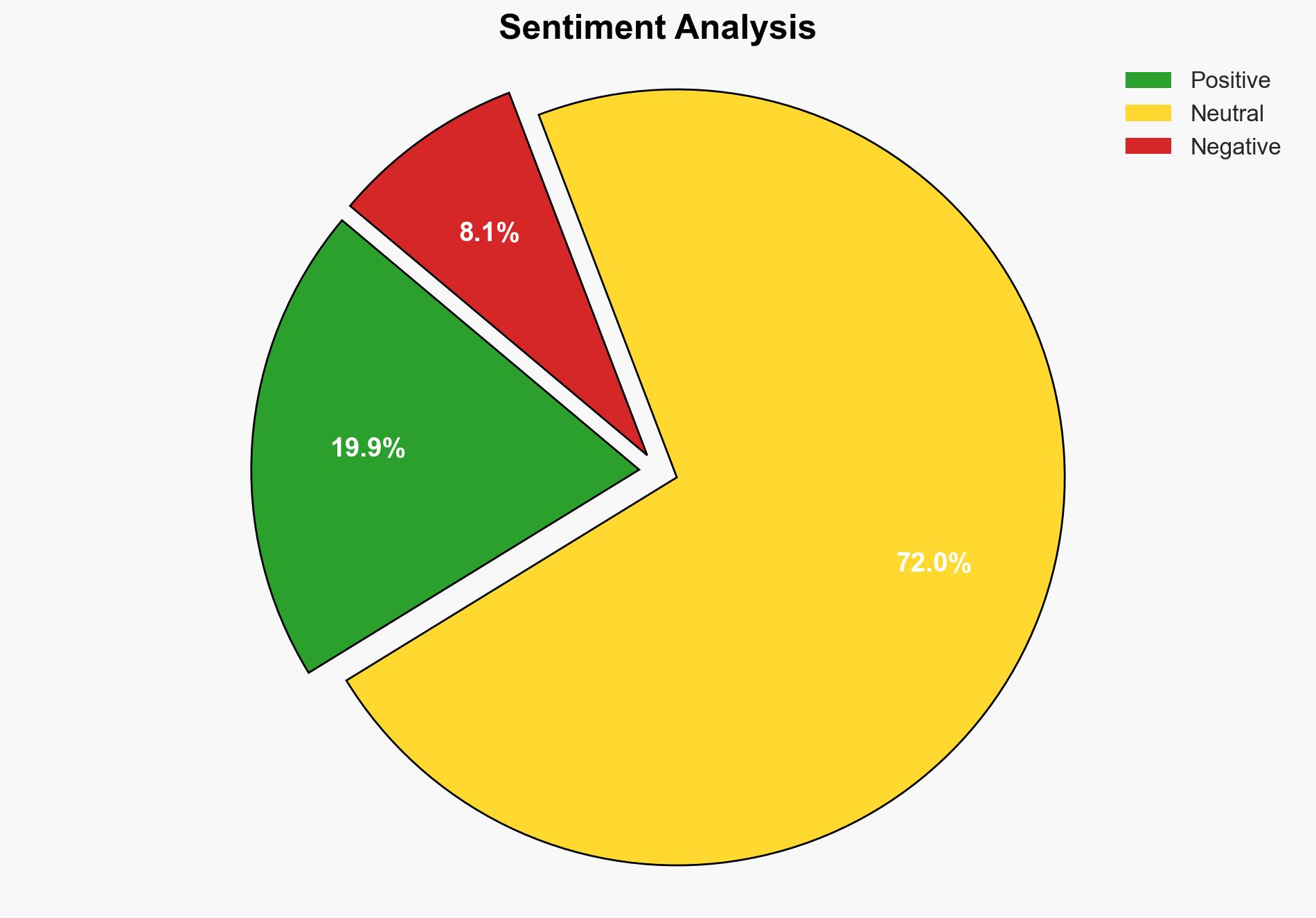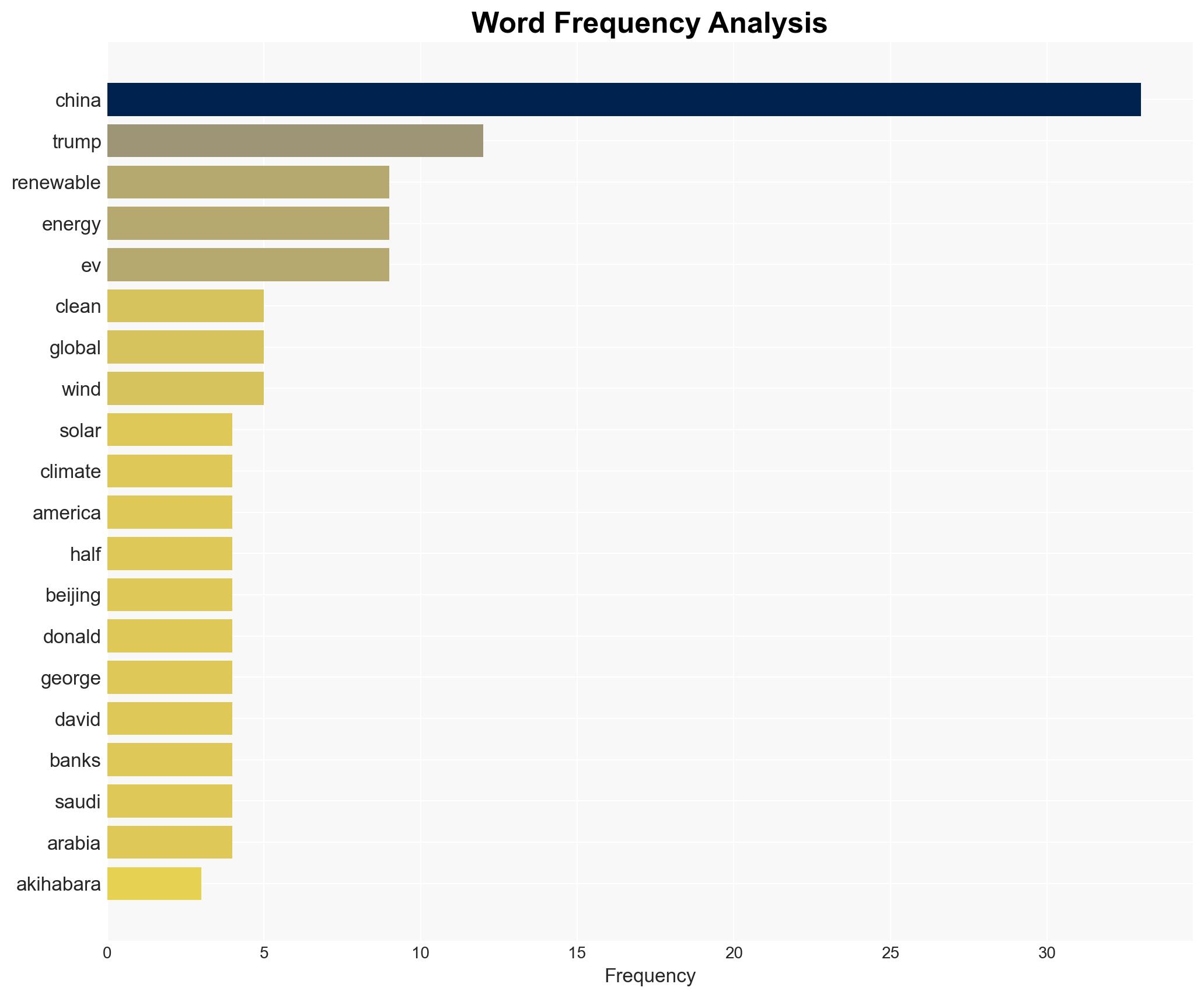Quitting the Renewables Race to Avoid Losing It – Akihabaranews.com
Published on: 2025-11-17
AI-powered OSINT brief from verified open sources. Automated NLP signal extraction with human verification. See our Methodology and Why WorldWideWatchers.
Intelligence Report:
1. BLUF (Bottom Line Up Front)
With a high confidence level, the most supported hypothesis is that China is strategically positioning itself to dominate the global clean technology sector, leveraging its manufacturing capabilities and government policies to outpace the United States. The recommended action is for the U.S. to enhance its investment in renewable technologies and foster public-private partnerships to regain competitive ground.
2. Competing Hypotheses
Hypothesis 1: China is deliberately advancing its clean technology sector to gain global economic and geopolitical leverage, while the U.S. is retreating from the race due to policy shifts under the Trump administration.
Hypothesis 2: The U.S. is strategically repositioning its focus on traditional energy sources to ensure energy security and economic stability, viewing the renewable sector as a secondary priority.
Hypothesis 1 is more likely due to China’s significant investments in renewable energy infrastructure and technology, contrasted with the U.S.’s policy decisions that have slowed renewable energy advancements.
3. Key Assumptions and Red Flags
Assumptions: It is assumed that China’s reported renewable energy advancements are accurate and not exaggerated. It is also assumed that U.S. policy decisions are primarily driven by economic considerations rather than geopolitical strategy.
Red Flags: Potential bias in reporting from sources with vested interests in the energy sector. The possibility of misinformation or propaganda influencing public perception and policy decisions.
4. Implications and Strategic Risks
The U.S. risks losing technological leadership and economic benefits associated with the renewable energy sector, potentially ceding influence to China. This shift could lead to increased dependency on Chinese technology and infrastructure, posing national security risks. Additionally, the U.S. may face diplomatic challenges in international climate agreements and economic forums.
5. Recommendations and Outlook
- Actionable Steps: Increase federal and state-level incentives for renewable energy projects. Encourage collaboration between government, academia, and the private sector to drive innovation. Implement policies to protect domestic industries from unfair foreign competition.
- Best Scenario: The U.S. revitalizes its renewable energy sector, regaining competitive parity with China and securing economic and geopolitical advantages.
- Worst Scenario: China solidifies its dominance in the global renewable market, marginalizing U.S. influence and control over critical technologies.
- Most-likely Scenario: The U.S. makes incremental progress in renewable energy, but remains behind China in terms of scale and influence.
6. Key Individuals and Entities
Donald Trump, George David Banks, Sheldon Whitehouse, CATL, BYD, CALB
7. Thematic Tags
Structured Analytic Techniques Applied
- Cognitive Bias Stress Test: Expose and correct potential biases in assessments through red-teaming and structured challenge.
- Bayesian Scenario Modeling: Use probabilistic forecasting for conflict trajectories or escalation likelihood.
- Network Influence Mapping: Map relationships between state and non-state actors for impact estimation.
Explore more:
National Security Threats Briefs ·
Daily Summary ·
Support us
·





